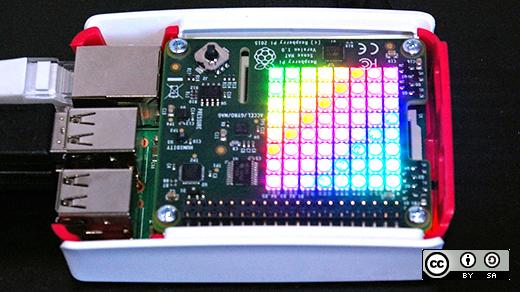- RT @A2JAuthor: Missed @johnpmayer history of #A2JAuthor @LSCtweets TIG conference in January? Here it is. https://t.co/ySZHl2LyaD #MayThe4t… 09:40:23, 2016-05-04
- RT @sglassmeyer: There could be so many more players in the legal info space but we ? simply ? can't ? get ? access ? to ? the ? law. Corpo… 09:41:38, 2016-05-04
- RT @sglassmeyer: Once we have an open corpus of case law to work with, there's going to be amazing changes to the ways we analyze and look… 09:41:57, 2016-05-04
- RT @seamuskraft: "Open data isn’t an outcome, its a process." – @mheadd https://t.co/q6A3hEhR9z | Couldn't agree more. Outreach & engagemen… 12:47:12, 2016-05-04
- RT @FoundOpenGov: Read @seamuskraft's full speech accepting the James Madison award from @ALALibrary: https://t.co/2LNvx3zLIB #openlaw http… 12:50:26, 2016-05-04
- RT @timoreilly: Thoughtful, deeply rooted in a sense of history and politics, and truly frightening https://t.co/y8vSvb4JqP Andrew Sullivan… 12:51:28, 2016-05-04
- Starting with 1999.io : Scripting News https://t.co/H9uui5tTD5 15:00:07, 2016-05-04
- My Twitter Digest for 05/03/2016 https://t.co/bL7MfP4Mvk 15:30:24, 2016-05-04
- Law Deans Unite to Support Arizona Law’s GRE Acceptance – Law Blog – WSJ https://t.co/chYGTbxhkx 19:58:15, 2016-05-04
Law Deans Unite to Support Arizona Law’s GRE Acceptance – Law Blog – WSJ
Law Deans Unite to Support Arizona Law’s GRE Acceptance – Law Blog – WSJ http://blogs.wsj.com/law/2016/05/04/law-deans-unite-to-support-arizona-laws-gre-acceptance/?mod=WSJBlog
My Twitter Digest for 05/03/2016
- Use npm shrinkwrap to manage dependencies in your node app https://t.co/s5RLslrIFE 07:52:11, 2016-05-03
- Experimenting with the Raspberry Pi Sense Hat | https://t.co/dPnyw7UCo7 https://t.co/vggpRkUxu2 https://t.co/RJKj4H82Ib 08:28:10, 2016-05-03
- RT @caliorg: Students & professors of all CALI member schools and organizations get unlimited, free access to CALI Lessons. https://t.co/6L… 09:34:16, 2016-05-03
- Windows 10: How to add Ubuntu Bash to the Start menu – TechRepublic https://t.co/ZhYOelU5JC 12:05:15, 2016-05-03
- My Twitter Digest for 05/02/2016 https://t.co/kG415PN4Y1 15:30:15, 2016-05-03
- Ever wonder how a big site like Stack Overflow handles code deployment? https://t.co/DVW553GqjE 18:05:18, 2016-05-03
Starting with 1999.io : Scripting News
Starting with 1999.io : Scripting News http://scripting.com/2016/05/04/1238.html
Ever wonder how a big site like Stack Overflow handles code deployment?
We’ve talked about Stack Overflow’s architecture and the hardware behind it. The next most requested topic was Deployment. How do we get code a developer (or some random stranger) writes into production? Let’s break it down. Keep in mind that we’re talking about deploying Stack Overflow for the example, but most of our projects follow almost an identical pattern to deploy a website or a service.
Source: Nick Craver – Stack Overflow: How We Do Deployment – 2016 Edition
Fascinating look into how Stack Overflow code gets from a developers workstation to production servers. There are many good ideas about development workflow in here.
My Twitter Digest for 05/02/2016
- Octa-core Cortex-A53 hacker SBC sells for $60 https://t.co/TmF5nlYjjH https://t.co/Bbq2vkRsdX 07:05:01, 2016-05-02
- Law School Graduate Employment Data Shows Decline in Legal Jobs – Law Blog – WSJ https://t.co/FBSrX2vgec 17:37:06, 2016-05-02
- Ubuntu 16.04 LAMP server tutorial with Apache 2.4, PHP 7 and MariaDB (instead of MySQL) https://t.co/O5qhH5IOH8 18:45:08, 2016-05-02
Windows 10: How to add Ubuntu Bash to the Start menu – TechRepublic
Windows 10: How to add Ubuntu Bash to the Start menu – TechRepublic http://www.techrepublic.com/article/windows-10-how-to-add-ubuntu-bash-to-the-start-menu/#ftag=RSS56d97e7
Experimenting with the Raspberry Pi Sense Hat | Opensource.com
The Opensource.com team has been fascinated by the Raspberry Pi Sense HAT, a low-cost addon for the Raspberry Pi that enables astronauts and citizen scientists alike to easily collect measurements from a variety of sensors to conduct science experiments or just have fun. So we decided to try one out ourselves. We grabbed a side room at our offices in Red Hat Tower and spent an hour or two learning what it can do. First step, attaching the device. Easy enough!
Source: Experimenting with the Raspberry Pi Sense Hat | Opensource.com
Fun things to do with your RPi.
Use npm shrinkwrap to manage dependencies in your node app
The reason to use npm’s shrinkwrap feature is that, while you can fix the versions of your direct dependencies in your package.json, you can’t fix the versions of their dependencies, which may be quite loosely specified. This means that if you or someone else rebuilds the image at some future time, you can’t guarantee (without using shrinkwrap) that it won’t pull down a different version of some indirect dependency, breaking your app. This seems to happen to me much more often than one might expect, so I advocate using shrinkwrap. If you are familiar with ruby’s excellent bundler dependency manager, npm-shrinkwrap.json is much like Gemfile.lock.
Source: Lessons from Building a Node App in Docker
Dependencies in the node ecosystem can be a real pain in the ass. Some relief can be had by using npm shrinkwrap to manage the dependencies of your dependencies.
Ubuntu 16.04 LAMP server tutorial with Apache 2.4, PHP 7 and MariaDB (instead of MySQL)
Ubuntu 16.04 LAMP server tutorial with Apache 2.4, PHP 7 and MariaDB (instead of MySQL) https://www.howtoforge.com/tutorial/install-apache-with-php-and-mysql-on-ubuntu-16-04-lamp/

